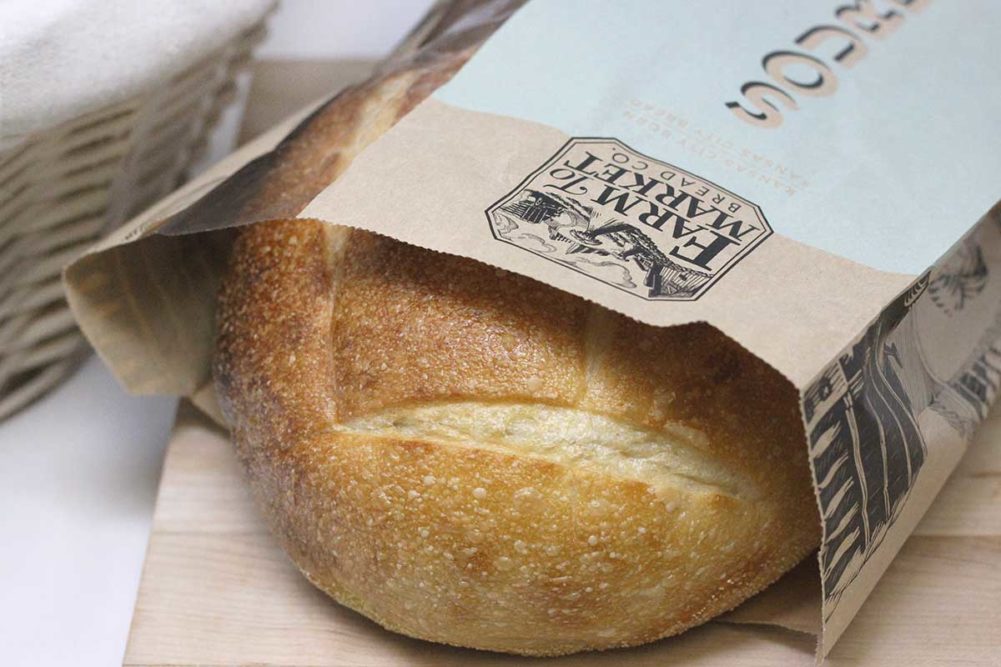The novelty of a specialty bread with a carefully crafted story is enticing to consumers as they seek to understand and connect with their food. This desire for transparency is a strength for the artisan bread category, and baking companies are looking at how to scale operations while staying true to the Old World process.
“Artisan bread trends are historically fueled by consumer demand for high-quality foods made from simple, clean ingredients that will elevate their meals at home,” said Christine Prociv, chief commercial officer, retail for Aspire Bakeries, Los Angeles. “During the pandemic quarantines, sourdough artisan breads came into the mainstream with home bakers. Today, artisan bread trends continue to be driven by the popularity and health benefits of sourdough and alternative grains, along with inflation causing consumers to replicate the restaurant experience without going out.”
As a core offering within artisan bread, sourdough is special because it is leavened with natural bacteria that takes time to develop, said Adam Paterakis, co-owner of Baltimore-based Kneads by H&S Bakery.
While therapeutic sourdough baking during the pandemic helped the artisan bread category gain more traction, John Friend, president of Kansas City, Kan.-based Farm to Market Bread Co., said growth drivers in the artisan bread category are more deeply rooted.
“The sourdough pandemic trend helped the scale of sourdough, but I think this is separate,” Friend said. “People who were turning away from bread and gluten in general began opening their eyes to sourdough.”
Perimeter bakery — where artisan breads are most often found — are outperforming center-store breads in both dollar and unit sales, according to Circana. The market research firm reported perimeter breads were up 11.7% in dollar sales and down 1.3% in unit sales for the year ended Dec. 3, 2023, compared with center-store breads that increased 6.4% in dollar sales and declined 2.7% in unit sales during the same period.
“With food cost inflation continuing to be high, consumers are still interested in creating a restaurant-like experience in-home and using premium breads to elevate their meals,” said Melissa Altobelli, principal of client insights for dairy and bakery vertical at Circana.
Consumers are interested in breads made with high-quality ingredients, and they are willing to pay a premium for these products, Altobelli said. A focus on healthy eating resonates with consumers, resulting in increased popularity for artisanal bakery products that provide benefits from whole grains, organic and locally sourced ingredients, and a lack of preservatives, artificial colors and flavors.
“Better-for-you products are driving growth in bread segments,” Altobelli explained. “A recent survey found that 40% of primary shoppers plan to eat healthier, and low-carb products continue to be in high demand. Artisan breads have the opportunity for continued growth as consumers continue to look for healthy options, variety and taste experiences. We expect the trend toward premiumization is here to stay. Consumers are still looking to treat themselves at home, and there is high demand for quality bakery products. The premium pricing of artisan breads is the hurdle.”
In addition to artisan bread having a higher price point, retailers have also been grappling with the best approach to working with a fast-consolidating group of bakery manufacturers pursuing larger scale production and not necessarily customized niche offerings, said Reed Immer, director of sales and marketing for New Haven, Conn.-based Chabaso Bakery. The challenge for retailers is developing partnerships with bakeries that can still provide the back-to-the-basics value and interesting flavors artisan breads offer.
Overall, a blend of tradition and innovation is moving the category forward, said Tasos Katsaounis, chief executive officer of Bread Man Baking Co., Houston.
“Consumers are seeking unique flavor profiles, experimenting with ancient grains and showing a growing interest in sourdough and fermentation techniques,” Katsaounis said. “Additionally, there’s a focus on sustainable practices, local sourcing of ingredients and a desire for visually appealing, handcrafted loaves. Social media has also played a role, showcasing intricate designs and diverse bread-making methods, sparking creativity and exploration in the artisan bread scene.”
This article is an excerpt from the February 2024 issue of Baking & Snack. To read the entire feature on Artisan Bread, click here.




